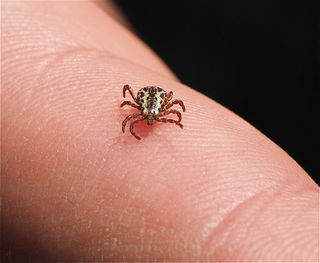Career
Imaginary Insects and Real Problems
There’s big trouble when the mind creates little creatures.
Posted April 7, 2014 Reviewed by Matt Huston

Our minds are snarls of perceptions and beliefs—and one of the most tangled sets of experiences consists of hallucinations, illusions and delusions. Let’s consider the first two of these phenomena in terms of how insects can infest the human psyche.
Hallucination arises internally; the experience is uniquely our own. The classic entomological hallucination is experienced with delirium tremens during alcohol withdrawal. These people often “see” insects on the walls or their bodies and experience tactile hallucinations—a feeling that insects are crawling across the skin, which is called formication (derived from Formicidae, the scientific name for ants). Chronic drugs use can also generate hallucinations, which have become known as ‘cocaine bugs’ and ‘crank bugs’ (in association with long-term amphetamine use).
Like a hallucination, an illusion is a misperception. However, illusions involve actual sensory stimuli (e.g., mirages). In illusory parasitosis, the individual experiences a genuine stimulus, but the sensation is incorrectly attributed to an insect or other parasite. A classic case unfolded in 1967 (the heyday of this disorder) when office workers reported prickling and tingling sensations. An exterminator applied an arsenal of pesticides, but the employees continued to feel small creatures crawling across their skin. As it turned out, some weeks earlier during installation of new equipment, nearly invisible particles of insulation had broken loose, were drawn into the ventilation system and then showered slowly over the office cubicles. When the ventilation system was thoroughly cleaned, the ‘infestation’ disappeared.
Given the long history of lice and other vermin infesting our primate ancestors, humans are evolutionarily primed for feeling itchy—and we’re also highly predisposed to find cause-and-effect associations. With illusory parasitosis, an individual often has some previous experience of an insect infestation (e.g., fleas in the carpet), so that the current sensation of itchiness (e.g., microscopic irritants) is ‘transposed’ to the earlier account. And itchiness is highly contagious—once a person starts scratching others begin to feel itchy themselves.
So when dozens of workers are scratching and complaining about non-existent insects, what can be done? First and most obviously, removing the source of irritation was important. But even after eliminating the stimulus, modifications in the social environment were sometimes needed. Psychologists ascertained that working conditions contributed to the emergence and spread of illusory parasitosis. In particular, the malady tended to appear when crowded, sedentary workers performed repetitive clerical work under intense pressure in drab, cluttered surroundings. In short, aesthetically and intellectually dull conditions fostered outbreaks.
Nipping hallucinations and illusions in the bud can be terribly important, as imaginary insects can become embedded in the infested mind—with devastating consequences. I’ll take up the phenomenon of delusory parasitosis in my next blog entry, which I hope you’re just itching to read!


